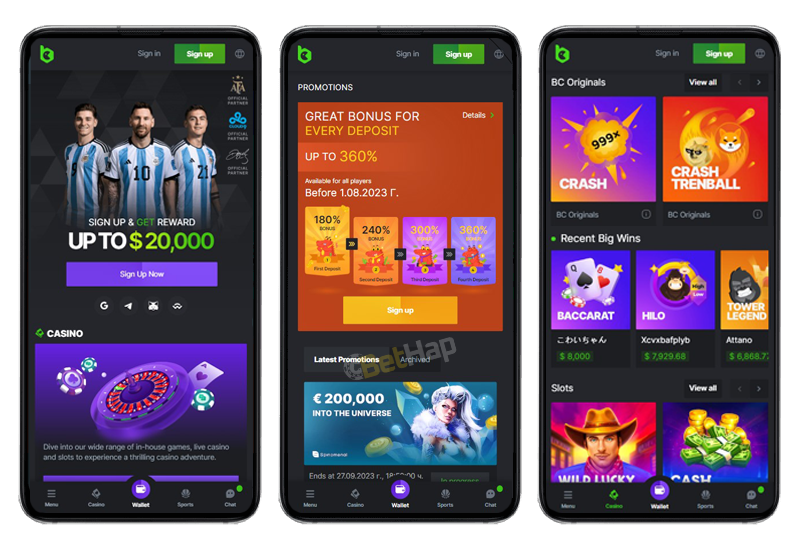
Ultimate Guide to Building a Mobile App for Android and iOS
In today’s digital landscape, having a mobile app is crucial for businesses looking to engage with their customers. This guide will explore the essential steps involved in creating a Mobile App for Android and iOS bc game for iphone and will provide you with insights to launch successful mobile applications on both Android and iOS platforms.
Understanding the Importance of Mobile Apps
Mobile apps have transformed the way users interact with smartphones, providing them with quick access to services, products, and information. With billions of smartphone users worldwide, mobile applications serve as a direct channel between businesses and their customers. They offer the convenience of on-the-go access, personalized user experiences, and the ability to communicate effectively.
Key Considerations Before Developing Your Mobile App
1. Define Your Purpose
Before starting the development process, it’s crucial to define the purpose of your mobile app. What problem does it solve? Who is your target audience? Understanding these factors helps shape your app’s functionality and design.
2. Market Research
Conduct thorough market research to identify competitors and understand trends in your app’s niche. Analyze popular apps to glean insights into user preferences and potential gaps that your app could fill.
3. Choose the Right Platform
Deciding whether to develop your app for Android, iOS, or both is a significant decision. Android holds a larger market share globally, while iOS users are generally more willing to spend on apps. Depending on your target audience, you might choose to start with one platform before expanding to the other.
Designing Your App
1. User Experience (UX)
A great app starts with an exceptional user experience. Ensure your app is intuitive, easy to navigate, and visually appealing. Collaborate with UX designers to create user personas and journey maps, which will guide the design process.
2. User Interface (UI)
The user interface is how users interact with your app visually. The design should be consistent with your brand and engaging while maintaining functionality. Use familiar design conventions to make the app accessible to a wider audience.
Development Process
1. Choose Your Development Approach

When it comes to app development, there are three primary approaches: native, hybrid, and web apps. Native apps are developed specifically for one platform, while hybrid apps combine elements from both native and web apps. Choose the approach that aligns best with your goals, budget, and timeline.
2. Development Tools and Frameworks
There are various tools and frameworks available for mobile app development. Popular choices for Android include Android Studio and Kotlin, while iOS developers often use Xcode and Swift. For hybrid apps, consider frameworks like React Native or Flutter, which allow you to maintain a single codebase for both platforms.
Testing Your App
Testing is a critical phase in app development. Rigorously test your app for functionality, usability, and performance across different devices and operating systems. Consider conducting beta testing with real users to gather feedback and make necessary improvements.
Launching Your App
Once your app is developed and tested, it’s time for launch! Prepare for the submission process in both the Google Play Store and the Apple App Store. Each platform has specific guidelines that you must adhere to. Create an enticing app store listing that includes a compelling description, keywords, and eye-catching visuals.
Marketing Your Mobile App
1. App Store Optimization (ASO)
Just like SEO for websites, App Store Optimization is crucial for helping your app get discovered. Optimize your app name, description, and keywords to improve your visibility in search results.
2. Social Media Marketing
Utilize social media platforms to promote your app. Create engaging content that resonates with your target audience. Consider running ads to reach a wider audience and drive downloads.
3. Influencer Collaborations
Partnering with influencers can help boost your app’s visibility. Find influencers within your niche who can promote your app to their followers, giving you access to a larger audience.
Post-Launch: Gathering Feedback and Updates
Your work doesn’t end after the launch. Gather user feedback and reviews to understand areas for improvement. Keep the app updated with new features and enhancements based on user requests.
Conclusion
Developing a mobile app for Android and iOS is a multifaceted process that requires careful planning, execution, and ongoing management. By understanding your audience, investing in quality design and development, and promoting your app effectively, you can achieve significant success in the mobile application market. Embrace the challenge and opportunities that come with mobile app development, and watch your business flourish in the digital realm.
